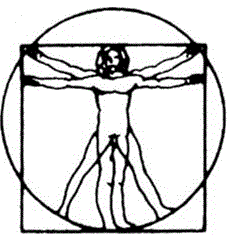Beta Brain Waves
(12 - 38 Hz)

Beta frequencies are relatively fast and associated with a “normal” state of thinking and mental activity. These brainwaves are mainly present during a typical waking state and when engaged in focused mental activity, problem solving, or decision making.
These brainwaves are mainly present during a typical waking state and when engaged in focused mental activity, problem solving, or decision making.
.
Midrange Beta (16-20 Hz) comes into play while actively making decisions or during high activity engagement. These frequencies are most active when aware of self and surroundings and actively alert and engaged. At any given site, we do not want less than 15% midrange beta and no more than 17% midrange beta activity.
High Beta (above 20-38 Hz) occurs during complex thought, high anxiety, or great excitement, and these high frequencies require an incredible amount of energy. These frequencies are also active when problem solving, anxious, and agitated. High beta should not be more than 10% anywhere in the brain.
Beta Frequency Location in the Brain
There should be 10% more beta on the left side of the brain than on the right. This is true for all sites but the temporal lobes. At T3, T4, T5, and T6, you want beta equally distributed on the left and right sides of the brain. We also want 10% more beta in the front of the brain than in the back of the brain.
Distinct Beta Wave States
Low Beta (12-15 Hz) can be described as a “normal” alert state. This frequency range is associated with
relaxed, yet focused tasks and a lack of this brainwave activity can affect ability to complete tasks that require focused attention.
Symptoms that can be related to less than optimal percentage or Beta location are:
If there is not enough low and/or midrange beta in the frontal lobes – Fp1, Fp2, F7, F8, F3 – then a person may experience confusion, lack of motivation, disorganization, and inefficiency.
If there is too much high beta over 10%, a person may experience anxiety, agitation, panic. He or she may also experience physical symptoms, including GI distress, racing heart, and tense muscles. A person may also have sleep difficulties – either with falling asleep, staying asleep, feeling rested, or difficulty with all 3 symptoms.
When a person’s sensory-motor rhythm (SMR) is under 10% in the sensory cortex, they will often struggle with numerous symptoms including difficulty with physical relaxation, attention deficits, sensitivity to extended stimuli, difficulty falling asleep or waking up, difficulty processing verbal information, and/or difficulty managing their body in space (ex. Often stubbing toes or bumping into things).
Sensory-Motor Rhythm patterns are associated with an attentive state paired with calm motor tasks.
Sensory-Motor Rhythm Patterns (12-15 Hz)
As explained previously, beta frequencies can be broken down into three different wave states. When low beta wave activity (ranging from 12-15 Hz) takes place in the sensory-motor cortex CZ, C3, and C4, these frequencies are called the sensory-motor rhythm (SMR).
The sensory-motor cortex runs from side to side across the middle of the brain and can most easily be described as being directly beneath the headpiece on a pair of headphones when placed over the ears. This area bridges the motor and sensory portions, or the front and back, of the brain.
SMR frequency patterns are associated with an attentive state paired with calm motor tasks. These brain wave patterns are typically absent in the brains of those with ADHD and autism due to the inability to focus on a single, immobile task. SMR activity is inhibited by motion while decreasing physical activity may increase SMR activity.
Training SMR activity to increase can be helpful for individuals with ADHD, because SMR correlates with the brain’s ability to filter and process external stimuli. All visual, auditory, and tactile info comes into the sensory-motor cortex and is them sent to other areas of the brain. It is optimal for the sensory-motor cortex to have 10-12% function in SMR (12-15 Hz). Brains functioning with less than 10-12% SMR struggle with feeling overwhelmed by the environment, and they often report difficulty concentrating, staying on task, and/or completing work or homework.
SMR activity also occurs during stage 2 non-rapid eye movement (NREM) sleep. These sudden bursts of activity are called sleep spindles and consist of 12-14 Hz waves that last for about .5 seconds. Sleeps spindles are important for memory consolidation and remaining asleep, with those exhibiting more sleep spindles sleeping more soundly throughout the night.
